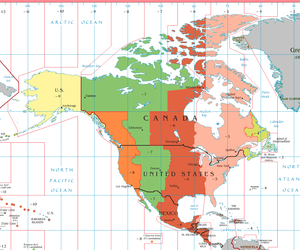Alaska Time Zone
| Alaska Time Zone | |
|---|---|
 |
|
| UTC offset | |
| AKST | UTC−9:00 |
| AKDT | UTC−8:00 |
| Observance of DST | |
| DST is observed throughout this time zone between the 2nd Sunday in March and the 1st Sunday in November. | |
| DST ended | 6 Nov 2016 |
| DST begins | 12 Mar 2017 |
The Alaska Time Zone observes standard time by subtracting nine hours from Coordinated Universal Time (UTC−09:00). During daylight saving time its time offset is eight hours (UTC−08:00). The clock time in this zone is based on mean solar time at the 135th meridian west of the Greenwich Observatory.
The zone includes nearly all of the U.S. state of Alaska and is one hour behind the Pacific Time Zone.
The western Aleutian Islands observe Hawaii–Aleutian Time, one hour behind the remainder of the state.
Effective from 2007, the local time changes from AKST to AKDT at 02:00 LST to 03:00 LDT on the second Sunday in March and returns at 02:00 LDT to 01:00 LST on the first Sunday in November.
Two time zones have been referred to as the "Alaska Time Zone": a UTC−10-based zone that covered much of Central Alaska in the early 20th century, and a UTC−9-based zone that has covered all of the state except the Aleutian Islands since 1983.
The Standard Time Act of 1918 authorized the Interstate Commerce Commission to define each time zone. The United States Standard Alaska Time was designated as UTC−10. Some references prior to 1967 refer to this zone as Central Alaska Standard Time (CAT) or as Alaska Standard Time (AST). In 1966, the Uniform Time Act renamed the UTC−10 zone to Alaska-Hawaii Standard Time (AHST), effective April 1, 1967. This zone was renamed in 1983 to Hawaii-Aleutian Standard Time (HAST) when the majority of Alaska was moved out of the zone.
Prior to 1983, the current Alaska Time Zone (UTC−9) was known as the Yukon Time Zone, observing Yukon Standard Time (YST). This time zone included Canada's Yukon Territory and a small portion of Alaska including Yakutat. The Alaska Panhandle communities were in the Pacific Time Zone, while most of the interior was on UTC−10.Nome and the Aleutians previously observed Bering Standard Time or UTC−11. In 1975, the Yukon Territory switched to Pacific Standard Time, leaving Yakutat the only land area in the zone.
...
Wikipedia
